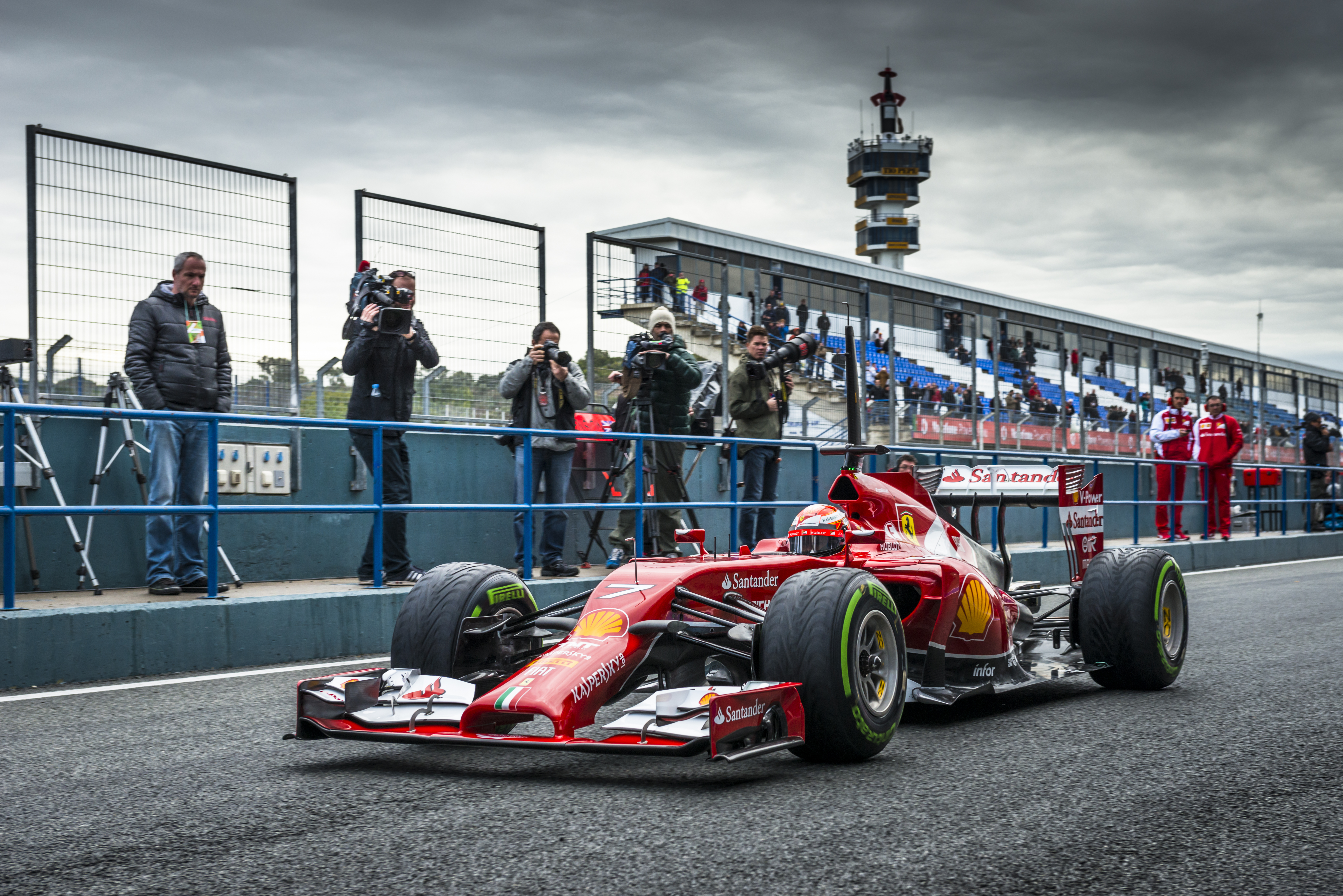Formula One racing is a type of automobile racing that features the most technologically advanced cars. Each Formula One car is designed and manufactured individually. The cars have a single seat and open wheels (no fenders). They have a hybrid engine, which is located behind the driver. Formula One cars are built according to a formula (set of specifications) drawn up by the Fédération Internationale de l’Automobile (FIA), which regulates international organized automobile racing. The formula dictates tire configuration (design) and chassis and engine limits, as well as the car’s weight and aerodynamic limits. A car’s chassis is its base frame, wheels, and other parts necessary for operation of the car. Aerodynamics refers to the design of the car’s body so that it can move through the air as quickly and efficiently as possible. Formula One cars are also called Grand Prix (pronounced << grahn PREE >>) cars. The races in which the cars compete include the French term Grand Prix (Great Prize) in their names.

Design.
Formula One cars are designed on some of the same principles as airplanes. Like the fuselage (body) of an airplane, a Formula One car uses monocoque construction. In this type of construction, the car’s central structure is a single-piece, tube-shaped shell made of carbon fiber and other durable, lightweight materials. A Formula One car has front and rear wings. The flow of air over and under the wings and other devices produces a downward force that presses the car to the ground. This downforce holds the car to the road, which enables it to go faster through turns.
In 2017, rule changes allowed wider front and rear wings and wider tires, which increased cornering speeds. In 2018, regulations limited engines to 15,000 rpms (revolutions per minute). The FIA reviews all rules regularly in an attempt to control the high costs that tend to limit competition to cars built by large manufacturers, such as Ferrari and Mercedes.
Grand Prix races
are the most famous international series of racing events held on road courses, with several held on the streets of such cities as Monaco and Singapore. The series consists of about 25 races held in various countries, including Australia, Bahrain, Belgium, Brazil, Canada, China, Japan, Spain, the United Kingdom, and the United States. The races are governed by the FIA representative in each country.
Grand Prix races are held on exceptionally challenging courses. The races range from about 160 to 190 miles (260 to 305 kilometers) in length. Cars reach speeds of more than 238 miles (381 kilometers) per hour on straightaways and may go as slow as 30 miles (48 kilometers) per hour around sharp turns. The first driver to finish the required number of laps around the course wins. The top 10 drivers receive points. The driver who earns the most points in Grand Prix races in a year wins the World Drivers’ Championship. There is also a Constructors’ Championship for manufacturers based on the same points system.
History.
The sport of automobile racing began in France in the 1890’s. These races were run between towns on ordinary public roads. In 1904, the FIA was formed to govern the international sport. Two years later, the FIA organized the first race to be called a Grand Prix, at Le Mans, France. The Formula One series directly emerged from the European Grand Prix races of the 1920’s and 1930’s. However, those races were governed by a variety of rules. Gradually, the FIA began to establish a “formula” of rules and regulations for the drivers and the cars. Plans were made for a world championship in the late 1930’s, but were suspended because of World War II (1939-1945). The first race according to FIA formula rules was held in 1946. The first Formula One World Drivers’ Championship was held in 1950. The winning driver was Giuseppe Farina of Italy. Juan Manuel Fangio of Argentina won five drivers’ championships from 1951 to 1957.
For many years, Formula One was a European sport with almost all races held in Europe. Racing was dominated by a small group of European automobile manufacturers, notably Alfa Romeo, Ferrari, Maserati, and Mercedes-Benz. Drivers from the United Kingdom, such as Jim Clark, Graham Hill, and Jackie Stewart, dominated from the early 1960’s through the early 1970’s. By the 1980’s, the international popularity of Formula One racing had led to championship races being held throughout the world. Today, about half of the roughly 20 races are held outside of Europe. Winning drivers of the 1980’s and 1990’s reflected the global interest in the sport. They included Nelson Piquet and Ayrton Senna da Silva of Brazil, Alain Prost of France, and Mika Hakkinen of Finland.
In the 2000’s, leading drivers have included Michael Schumacher and Sebastian Vettel of Germany, Fernando Alonzo of Spain, Nico Rosberg of Finland and Germany, and Lewis Hamilton of the United Kingdom. Schumacher held the record for most Drivers’ Championships with seven until 2020, when Hamilton tied the record.
